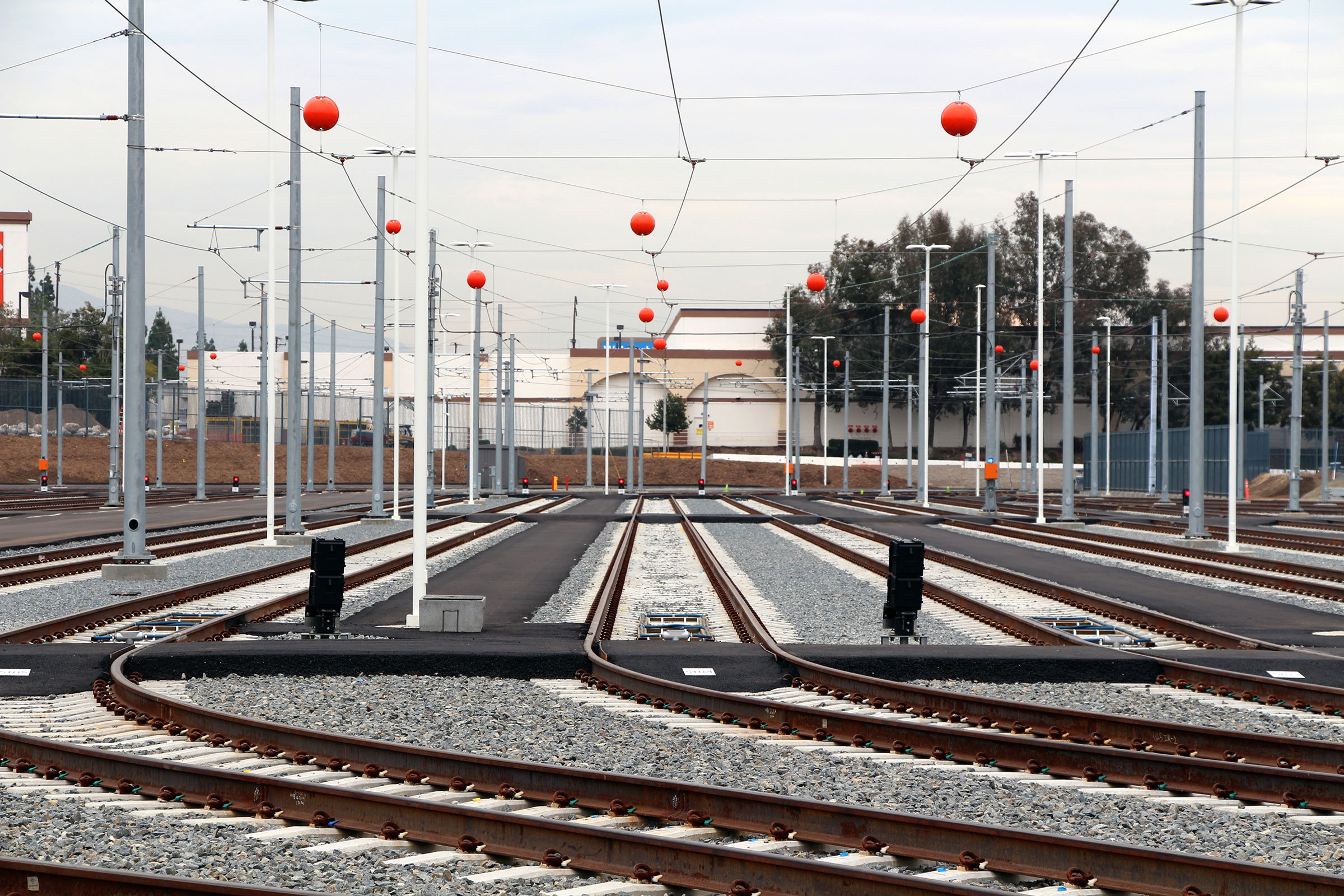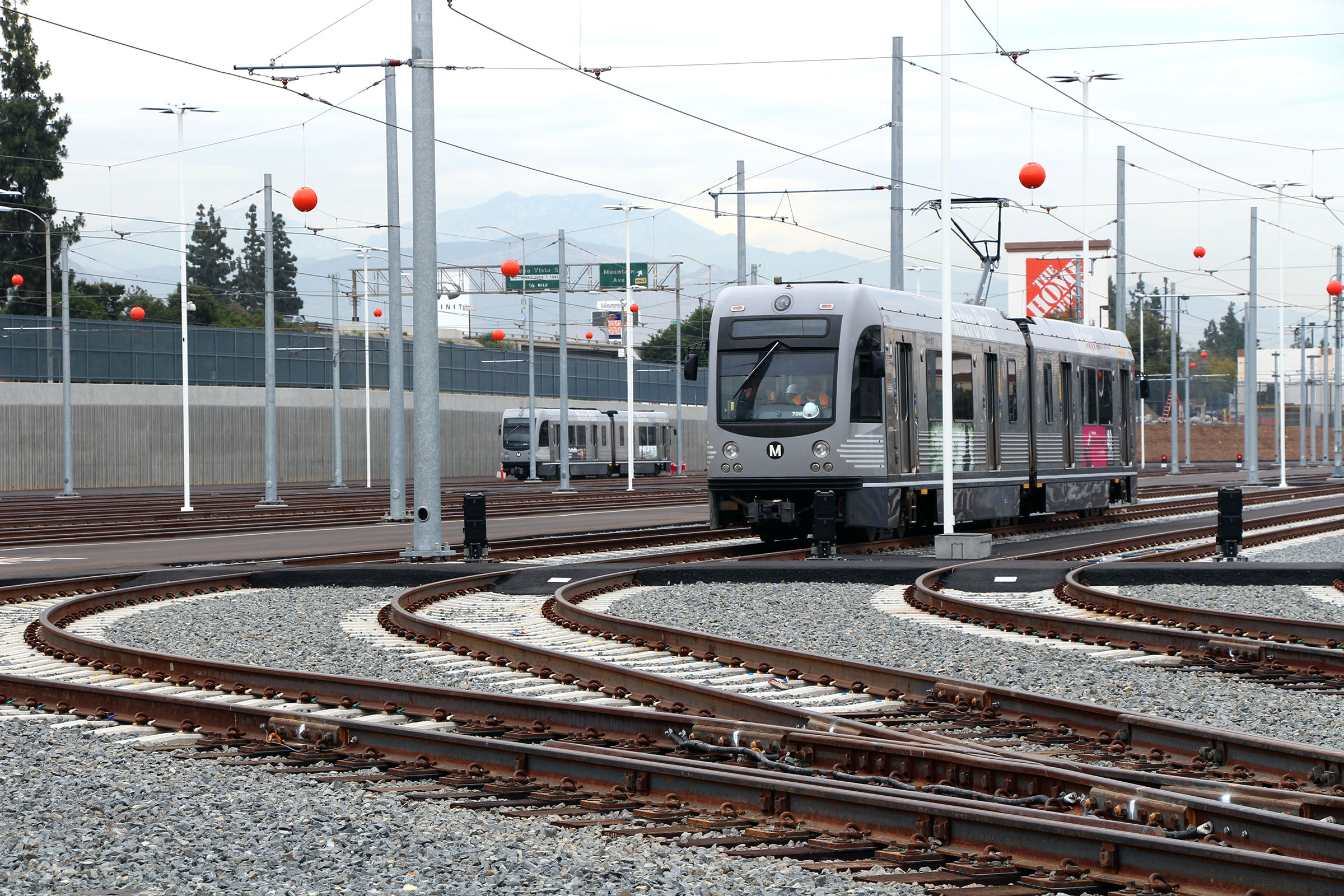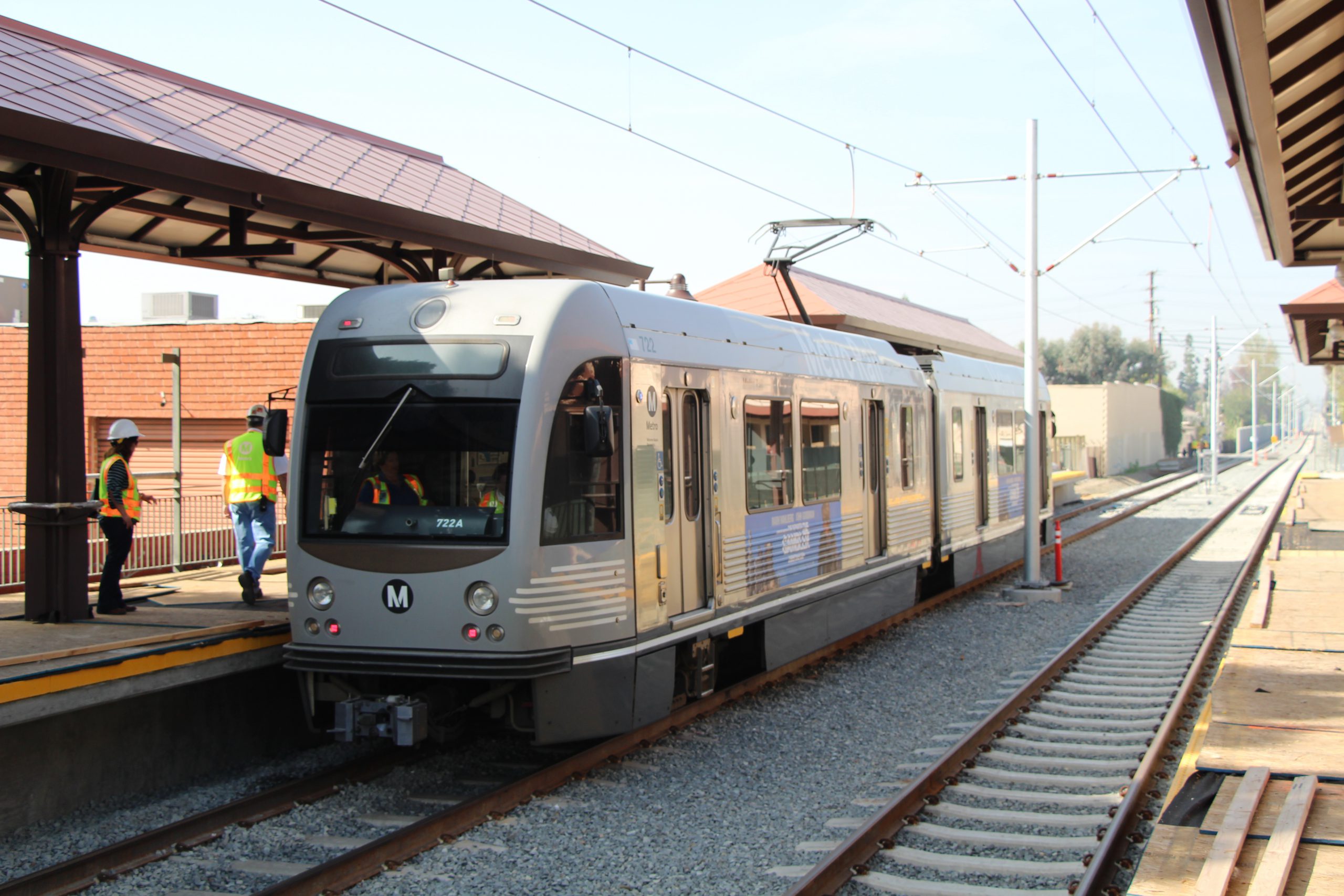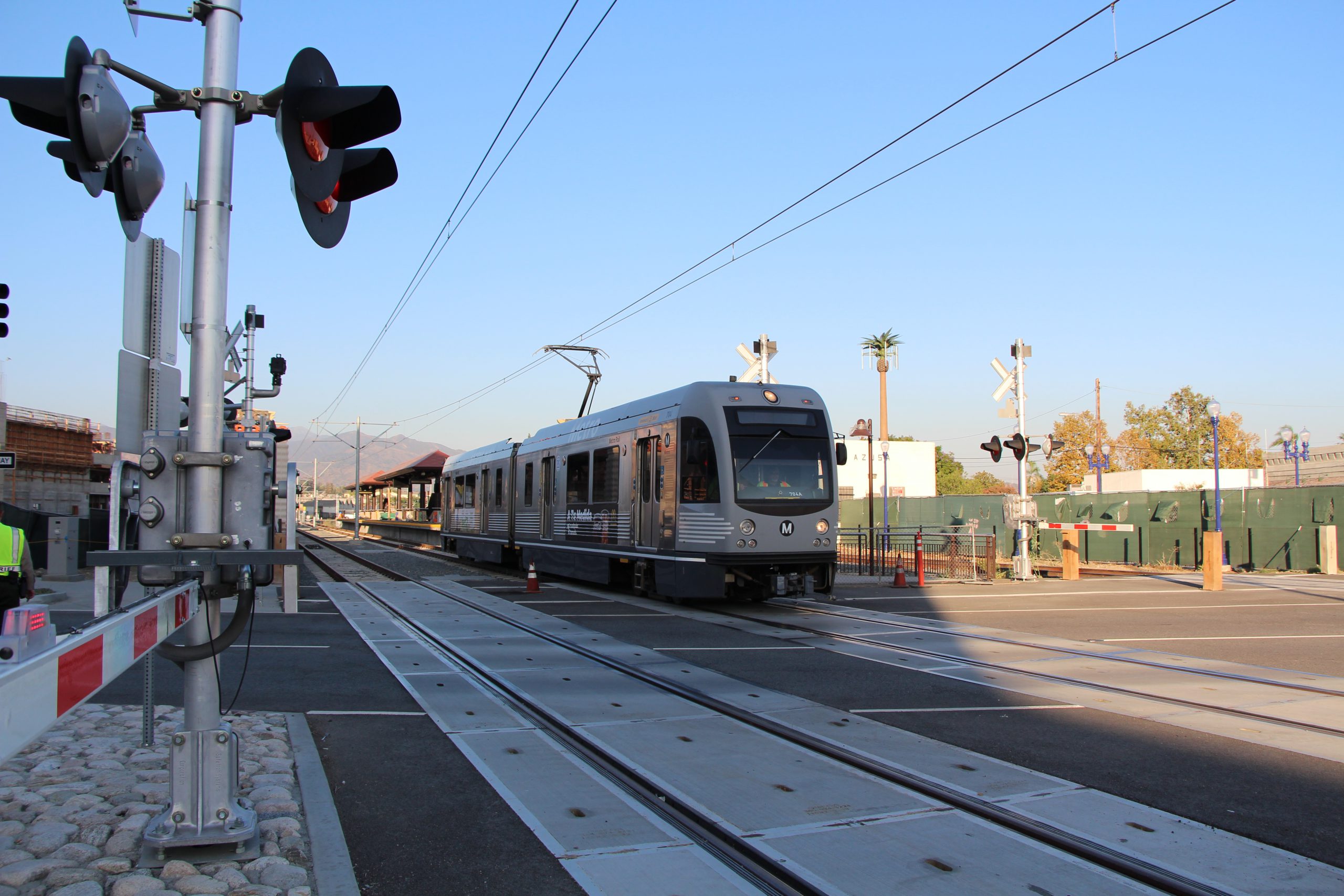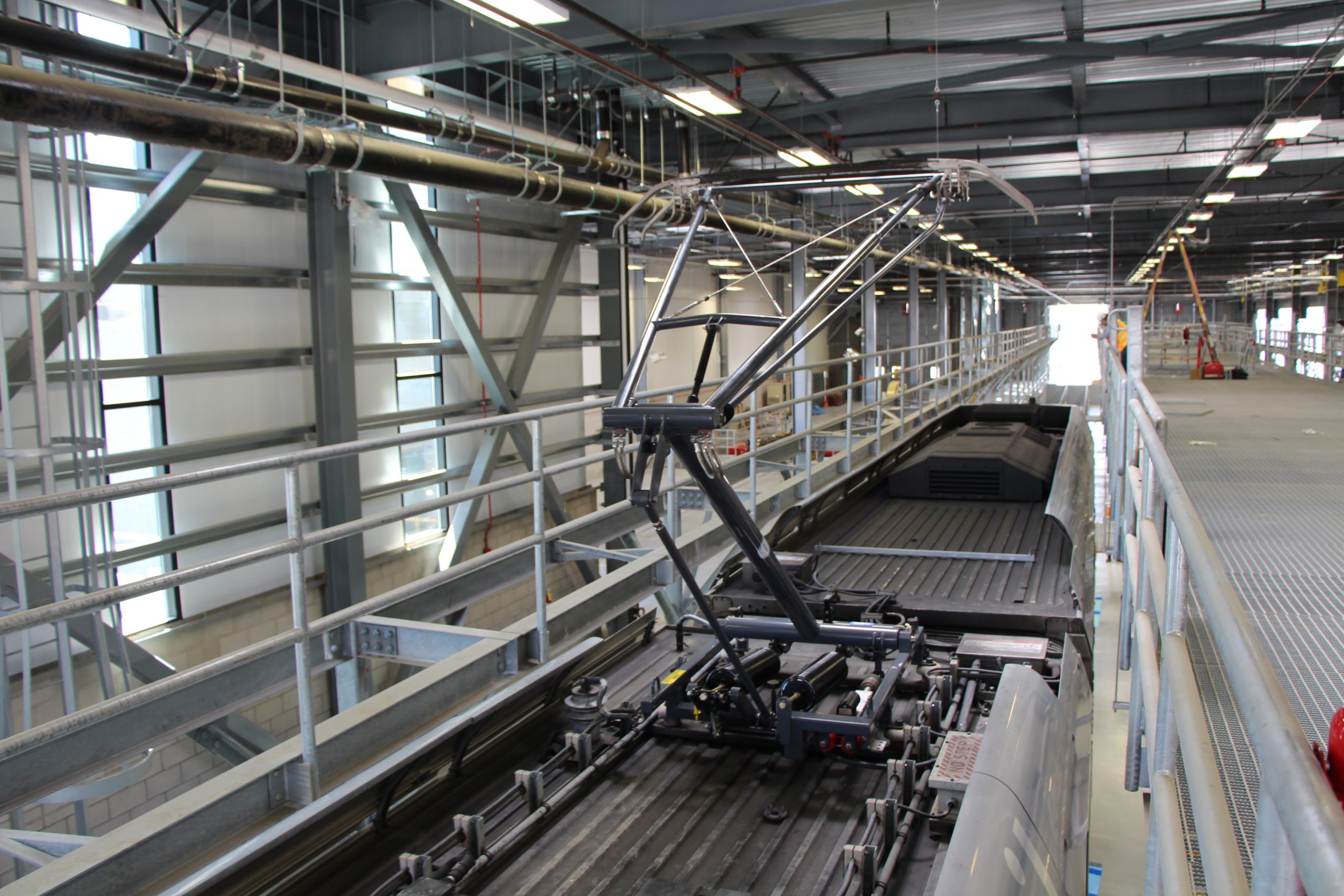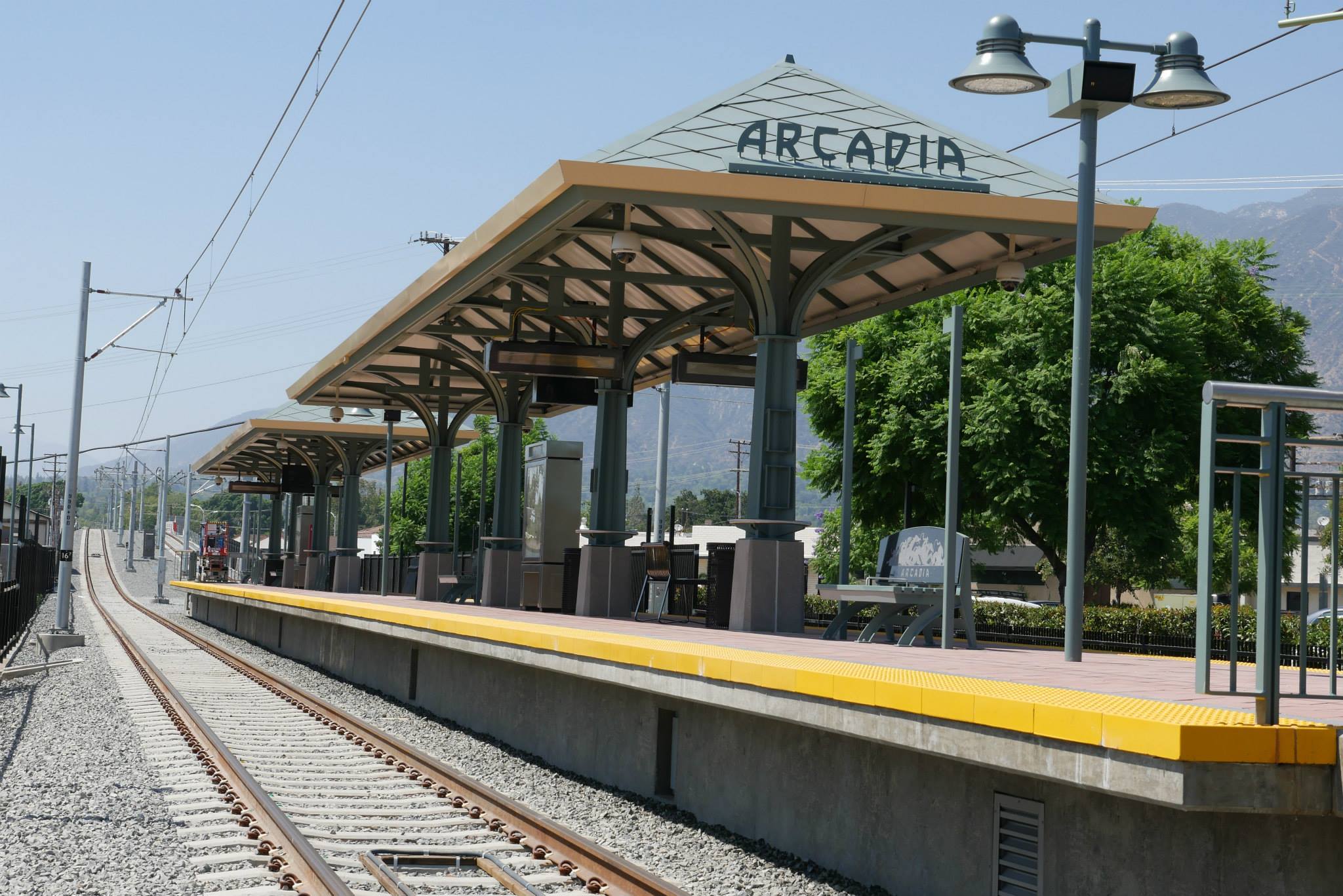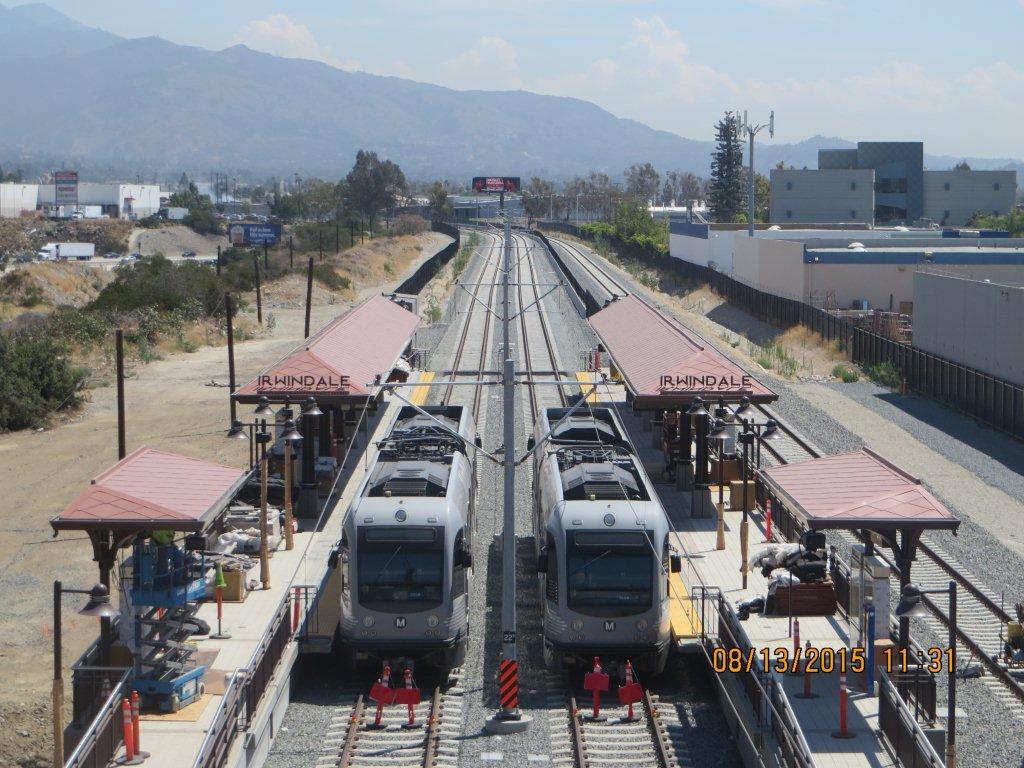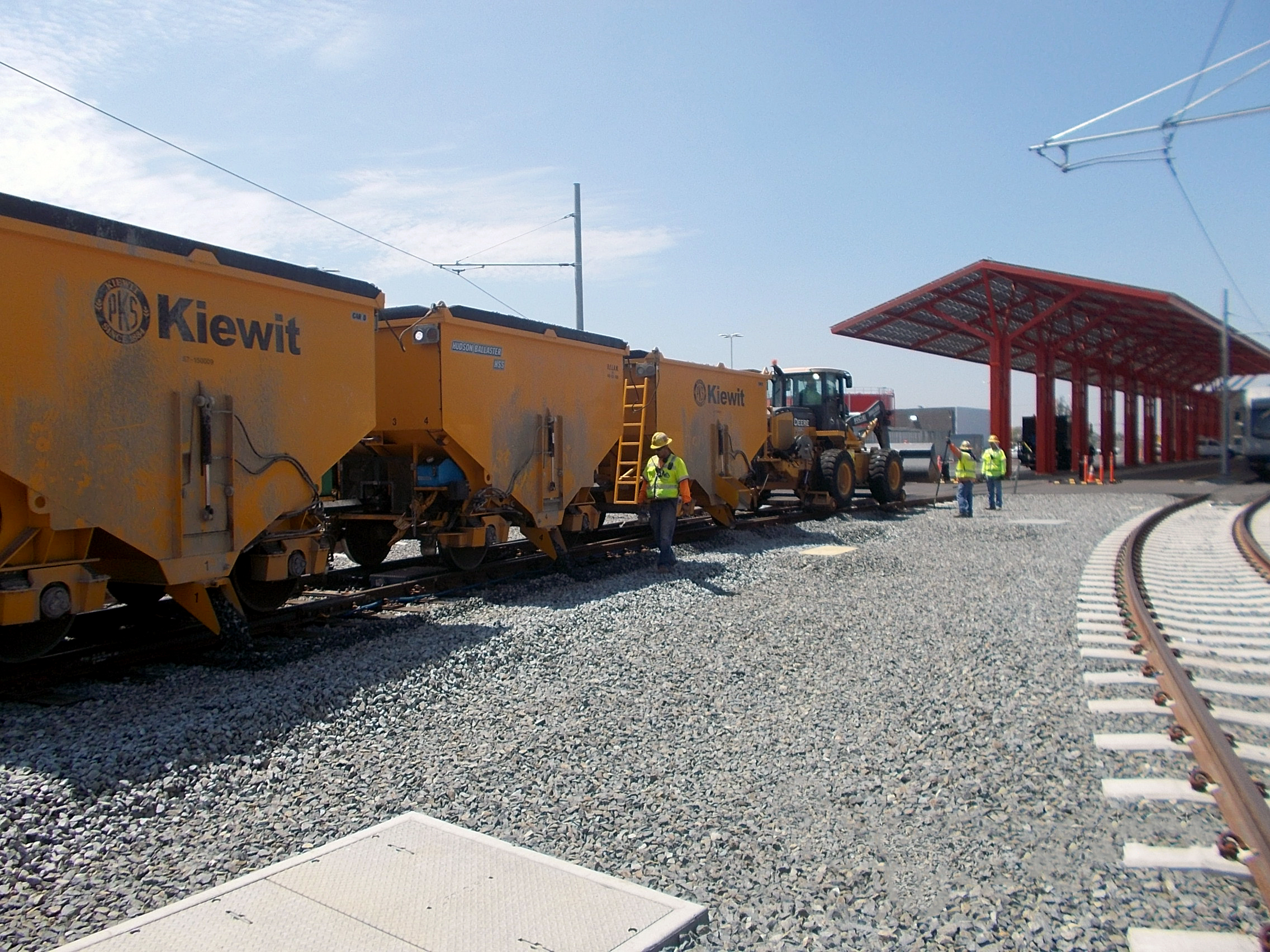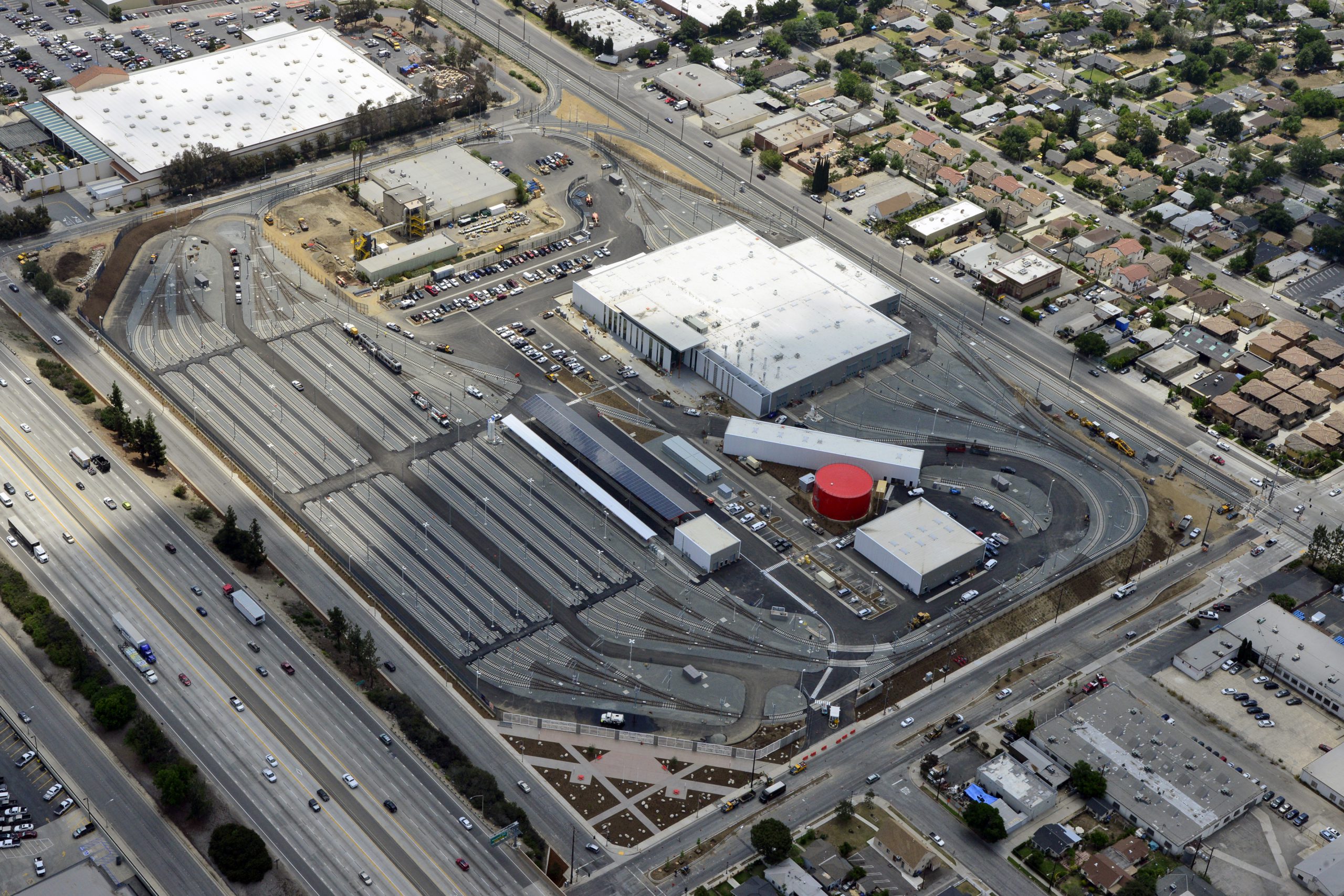Metro Gold Line Foothill Extension Phase 2A
Pasadena and Azusa, California
The Metro Gold Line Phase 1 Eastside Light Rail Transit (LRT) Extension extends LA Metro’s Los Angeles-to-Pasadena Gold Line from downtown’s Union Station to East Los Angeles. The extension features eight stations (six at-grade and two underground), twin 1.8-mi.-long tunnels and three major bridges crossing US 101, the Los Angeles River, and I-710. For Phase 2A and 2B, Kiewit managed the design and construction of major civil and infrastructure components, including all related structures, systems, and facilities; roadway improvements; utilities and storm drainage; bridges; retaining walls and noise barriers; grade crossings; earthwork, and track installation. One of the important steps of the Metro Gold Line project was the connection to the existing network at Sierra Madre station. Installation of new light rail tracks had to be done during short periods of interruption of service during off-peak hours. This task was performed safely without disrupting passenger services. Planning for the integration of systems began at the design stage and was implemented in collaboration with client operations. Track work included four miles of ballasted yard track, 2,788-ft. of direct fixation track, 2,625-ft. of concrete embedded track, 61 track turnouts, two double crossovers, and three single crossovers. A LEED Gold M&O facility was designed and constructed to house up to 84 Light Rail Vehicles (LRVs) and nearly 200 employees. Nearly a third of the electricity to power the facility was by an onsite 178.5 kw solar power array.
Phase 2A: The $515 million design-build project (Phase 2A) includes the design and construction of 11.5 mi. of double light rail main track in Los Angeles County with 15 elevated guideway bridges, six stations, 14 at-grade rail crossings, and a 24-acre maintenance and operations facility.
Phase 2A of the project included the design and construction of 11.5 mi. of double light rail main track, 15 bridges, 6 new stations, and 14 at-grade rail crossings, and a 24-acre maintenance and operations facility. The project tied in to an existing operating rail line, so Kiewit had to make sure all systems and project pieces integrated seamlessly to the existing line.
